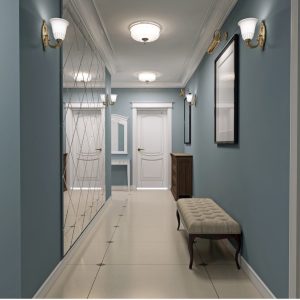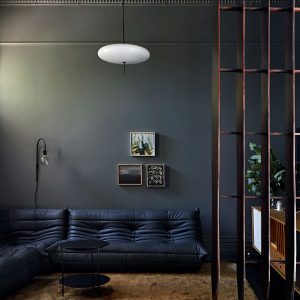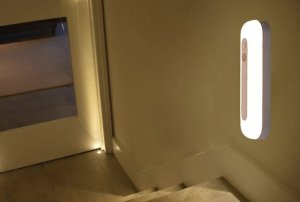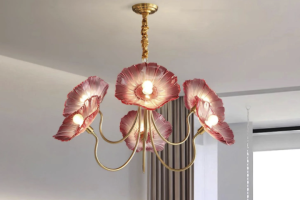
Outdoor lighting serves multiple important functions, making it a crucial element in any exterior environment. It significantly enhances the visual appeal of a property, creating an inviting atmosphere. Proper illumination extends the usability of outdoor areas, enabling activities to continue after dark.
This is beneficial for both residential and commercial spaces, allowing homeowners to maximize their outdoor living areas and businesses to attract customers to outdoor venues. Safety and security are paramount concerns addressed by outdoor lighting. It illuminates walkways, entrances, and potential hazards, reducing the risk of accidents and deterring potential intruders.
The right lighting 88off can also create ambiance and mood, setting the tone for various occasions, from intimate gatherings to lively social events. Outdoor lighting can accentuate architectural features, landscaping, and focal points, adding depth and dimension to the environment. This creates visual interest and draws attention to specific elements.
Furthermore, well-designed outdoor lighting can increase a property’s value by improving its curb appeal and making it more attractive to potential buyers or renters. In essence, outdoor lighting is a multifaceted solution that combines aesthetics, functionality, safety, and value enhancement, making it an indispensable component of any outdoor space design.
Types of Outdoor Lighting
Pathway and Accent Lighting
One of the most common types is pathway lighting, designed to illuminate walkways, driveways, and garden paths. Pathway lights are typically low to the ground and provide a soft, diffused light that helps guide people safely through outdoor areas. Another popular type of outdoor lighting is accent lighting, used to highlight specific features such as trees, sculptures, or architectural elements. Accent lights are often adjustable and can be positioned to create dramatic effects and draw attention to focal points in the outdoor space.
Floodlights and Security Lighting
Floodlights are another type of outdoor lighting that provides broad, intense illumination over a large area. These lights are often used for security purposes or to illuminate large outdoor spaces such as sports fields or parking lots.
Decorative and Specialized Lighting Options
Additionally, there are also decorative lighting options such as string lights, lanterns, and decorative sconces that add a touch of style and personality to outdoor spaces. These lights are often used for creating ambiance and enhancing the visual appeal of outdoor areas. Finally, there are also specialized lighting options such as underwater lights for ponds or pools, as well as deck and patio lights for outdoor living areas. With such a wide range of options available, it’s important to consider the specific needs and requirements of your outdoor space when choosing the right type of lighting.
Choosing the Right Lighting for Your Space
When choosing the right lighting for your outdoor space, it’s important to consider several factors to ensure that you select the most suitable options. Firstly, consider the purpose of the lighting – whether it’s for safety, security, ambiance, or highlighting specific features. This will help you determine the type of lighting that best meets your needs.
Additionally, consider the size and layout of your outdoor space, as well as any specific areas that require illumination such as pathways, seating areas, or landscaping features. Understanding the specific requirements of your outdoor space will help you determine the quantity and placement of lights needed. Furthermore, it’s important to consider the style and design of your outdoor space when choosing lighting options.
The lighting should complement the overall aesthetic of the space and enhance its visual appeal. For example, modern and minimalist outdoor spaces may benefit from sleek and understated lighting fixtures, while traditional or rustic spaces may be better suited to more ornate or vintage-style lights. Additionally, consider the power source for your outdoor lighting – whether it’s hardwired into your electrical system or powered by solar energy.
Each option has its own advantages and limitations, so it’s important to weigh these factors when making your decision. Ultimately, choosing the right lighting for your space requires careful consideration of its purpose, layout, design, and power source.
Design Tips for Effective Outdoor Lighting
Designing effective outdoor lighting requires careful planning and consideration of various factors to achieve the desired results. One important design tip is to create layers of light in your outdoor space by incorporating different types of lighting such as ambient, task, and accent lighting. This helps create depth and dimension in the space while also serving different functional purposes.
For example, ambient lighting can provide overall illumination for the entire outdoor area, while task lighting can be used for specific activities such as cooking or reading. Accent lighting can then be used to highlight specific features or create visual interest. Another important design tip is to carefully consider the placement and positioning of lights to ensure optimal illumination and visual impact.
Pathway lights should be strategically placed along walkways to provide safe navigation, while accent lights should be positioned to highlight specific features such as trees or architectural elements. Additionally, consider the angle and direction of light to create dramatic effects and minimize glare. It’s also important to consider the color temperature of the light – whether it’s warm or cool – to create the desired ambiance in the outdoor space.
By carefully planning the placement and type of lights in your outdoor space, you can achieve effective and visually appealing results.
Safety and Security Considerations
Safety and security are important considerations when it comes to outdoor lighting, as proper illumination can help prevent accidents and deter potential intruders. One key safety consideration is to ensure that pathways, steps, and other potential hazards are well-lit to prevent trips and falls, especially in low-light conditions. This is particularly important for properties with elderly residents or young children who may be more susceptible to accidents in poorly lit areas.
Additionally, proper lighting around entrances and exits is essential for security purposes, deterring intruders and providing peace of mind for homeowners. Another important safety consideration is to use fixtures that are designed for outdoor use and are weather-resistant to withstand exposure to the elements. This helps prevent electrical hazards and ensures that the lights remain functional in all weather conditions.
Furthermore, it’s important to regularly inspect and maintain outdoor lighting systems to address any potential safety issues such as exposed wiring or damaged fixtures. By prioritizing safety considerations in your outdoor lighting design, you can create a secure and comfortable environment for residents and visitors alike.
Energy Efficiency and Sustainability
Energy-Efficient Lighting Options
Choosing energy-efficient lighting options such as LED fixtures can help reduce energy consumption and lower utility costs while also minimizing environmental impact. LED lights are known for their long lifespan and low energy usage compared to traditional incandescent or halogen bulbs, making them an ideal choice for outdoor applications.
Sustainable Lighting Alternatives
Solar-powered lights are another sustainable option that harnesses renewable energy from the sun to power outdoor lighting without relying on electricity. Furthermore, consider using motion sensors or timers with your outdoor lighting systems to minimize unnecessary energy usage by only activating lights when needed. This not only reduces energy consumption but also enhances security by automatically illuminating areas when motion is detected.
Smart Lighting Technology
Consider incorporating smart lighting technology that allows for remote control and automation of outdoor lights based on specific schedules or conditions. By prioritizing energy efficiency and sustainability in your outdoor lighting design, you can reduce environmental impact while also enjoying cost savings on energy bills.
Maintenance and Upkeep of Outdoor Lighting Systems
Proper maintenance and upkeep are essential for ensuring that outdoor lighting systems remain functional and visually appealing over time. Regularly inspecting fixtures for damage or wear and tear can help identify any issues early on and prevent further damage. This includes checking for loose connections, damaged wiring, or corrosion that may affect the performance of the lights.
Additionally, cleaning fixtures regularly to remove dirt, debris, or corrosion can help maintain their appearance and functionality. Furthermore, it’s important to replace bulbs as needed to ensure consistent illumination throughout the outdoor space. This includes replacing any burnt-out bulbs or upgrading to more energy-efficient options such as LED bulbs when necessary.
Additionally, consider trimming back vegetation that may obstruct or shade lights to ensure optimal illumination in outdoor areas. Finally, consider scheduling professional maintenance services at least once a year to thoroughly inspect and service outdoor lighting systems for optimal performance and longevity. By prioritizing regular maintenance and upkeep of your outdoor lighting systems, you can ensure that they remain functional, safe, and visually appealing for years to come.
In conclusion, outdoor lighting plays a crucial role in enhancing the aesthetic appeal, functionality, safety, security, ambiance, value, energy efficiency, sustainability of outdoor spaces. With various types of outdoor lighting available such as pathway lighting accent lighting floodlights decorative lighting specialized lighting options like underwater lights deck patio lights there are many options available when choosing the right lighting for your space considering factors like purpose size layout style design power source is essential in making an informed decision designing effective outdoor lighting requires careful planning considering factors like creating layers of light placement positioning angle direction color temperature safety security considerations are crucial when it comes to proper illumination preventing accidents deterring intruders using weather-resistant fixtures regular inspection maintenance energy efficiency sustainability are important considerations when choosing energy-efficient sustainable options like LED solar-powered lights motion sensors timers smart technology maintenance upkeep are essential for ensuring that outdoor lighting systems remain functional visually appealing over time regularly inspecting cleaning replacing bulbs trimming back vegetation scheduling professional services all contribute to maintaining optimal performance longevity in outdoor spaces ultimately prioritizing these considerations will result in creating a comfortable safe visually appealing environmentally friendly cost-effective outdoor environment for years to come






